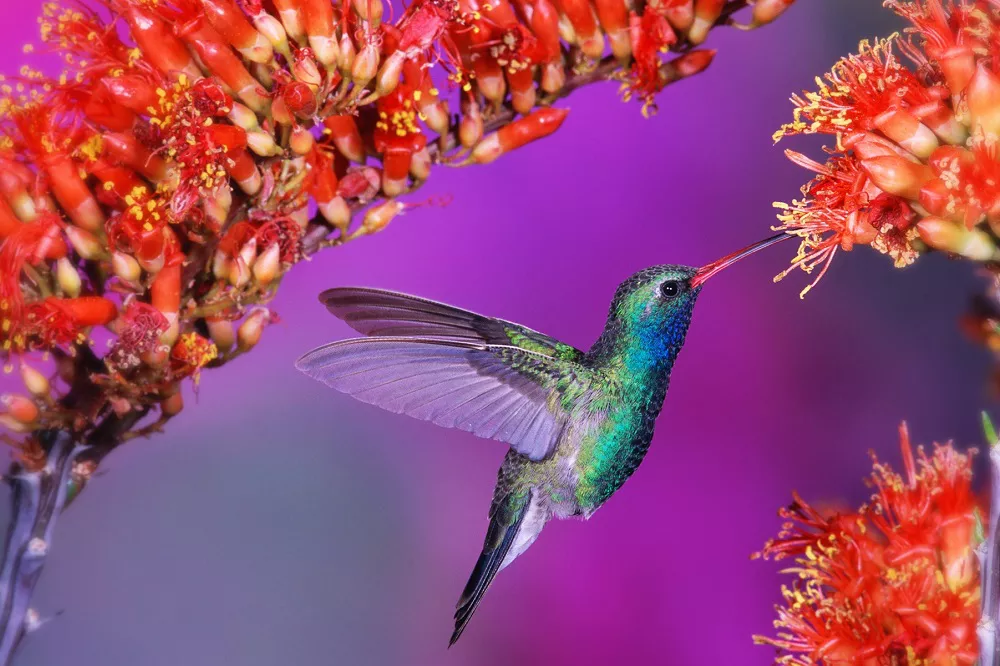Hummingbirds are fascinating birds known for their small size, unique flying abilities, and brightly colored feathers. These birds are found in North and South America and are beloved by bird watchers and nature enthusiasts. One question that often arises is where do hummingbirds sleep? In this article, we will explore the different places hummingbirds sleep and what factors influence their sleeping habits.
Natural Sleeping Habits of Hummingbirds:
Hummingbirds are diurnal, meaning that they are active during the day and rest at night. They sleep for an average of 12 hours per day, and their sleeping patterns can be influenced by a variety of factors such as food availability, weather, and temperature. Hummingbirds sleep in a way that is unique from most other birds. Instead of perching on a tree branch or in a nest, they enter a state of torpor where their heart rate and breathing slow down, and their body temperature drops significantly. This allows them to conserve energy and survive through periods of low food availability.
Where do Hummingbirds Sleep:
Hummingbirds have different sleeping habits based on their species, age, and location. Some species of hummingbirds sleep alone, while others sleep in groups. Some common places hummingbirds sleep are:
Trees and Shrubs: Hummingbirds frequently select trees and dense shrubs as overnight roosting spots. They typically choose locations with dense foliage, providing them with protection from predators and shelter from the elements. By blending in with the surrounding leaves, hummingbirds can sleep undisturbed and hidden from view.
Branches and Perches: Some hummingbird species opt for exposed branches or perches to spend the night. These perches offer a vantage point that allows them to monitor their surroundings for potential threats. While these sleeping locations may seem vulnerable, hummingbirds’ small size and agility, combined with their nocturnal behavior, help minimize the risk of predation.
Nests: Although hummingbirds do not use their nests for sleeping, they may occasionally utilize abandoned nests or construct makeshift roosts within existing nests. These nests provide added protection and insulation, ensuring a cozy and secure sleeping environment.
Human-Made Structures: In urban and suburban areas, hummingbirds have adapted to using man-made structures for their nighttime rest. They may seek shelter in covered porches, eaves, or even under bridges. These structures provide a safe haven from predators and the elements, demonstrating the hummingbirds’ resourcefulness and adaptability.
Torpor: A Unique Sleeping State:
Hummingbirds possess a remarkable ability to enter a state of deep rest known as torpor. Torpor is a physiological adaptation that allows hummingbirds to conserve energy during periods of low food availability, such as at night or during cold weather. During torpor, a hummingbird’s metabolic rate slows down significantly, and its body temperature drops. This energy-saving mode enables them to survive the night without expending excessive energy on maintaining their high metabolic rate.
Factors that Influence Hummingbird Sleeping Habits:
Several factors influence where hummingbirds sleep and their sleeping habits, including:
- Temperature:
Hummingbirds enter torpor when the temperature drops significantly, allowing them to conserve energy. They may sleep in warmer places during the colder months, such as inside a roosting box or in a sheltered area.
- Predators:
Hummingbirds are vulnerable to predators, such as cats and larger birds. They may choose to sleep in a well-hidden location, such as inside foliage, to avoid being detected.
- Food Availability:
Hummingbirds need to consume a lot of food to maintain their high metabolism. They may sleep near a food source to ensure that they can access it quickly when they wake up.
Conclusion:
Unveiling the sleeping habits of hummingbirds has been a captivating pursuit for bird enthusiasts and scientists alike. These remarkable birds display a unique approach to sleep, seeking out hidden spots in trees, shrubs, branches, or even man-made structures. Their preference for secure locations with dense foliage ensures their safety from predators and provides shelter from the elements. Additionally, hummingbirds enter a state of torpor to conserve energy during rest periods, further enhancing their ability to thrive in diverse environments. By understanding and respecting the sleeping habits of hummingbirds, we can appreciate the intricate adaptations that contribute to their survival and enchanting presence in our natural world.
Related topics:
- How To Attract Hummingbirds, 5 Effective Methods
- How to make sugar water for Hummingbirds (A Full Guide)
- How fast can Hummingbirds fly?
- How long do Hummingbirds live?


 Facebook
Facebook  Instagram
Instagram  Youtube
Youtube 